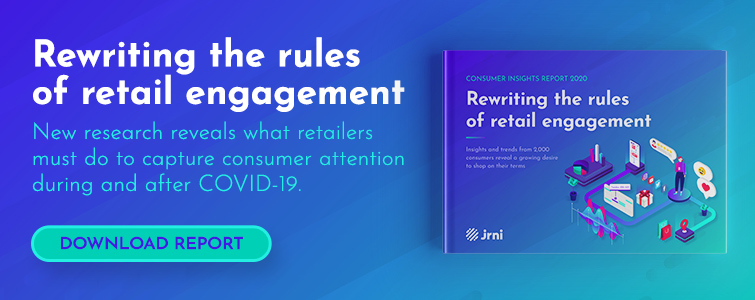Price comparison in retail: Think like consumers to win the sale
December 03, 2019
This is a guest post by Matt Ellsworth, the Content Marketing Manager at Wiser.
Price. Depending on who you ask, it's either the most important buying factor or ... one of the most important buying factors. Yes, price is a big deal in retail.
Your average consumer agreed. Wiser Solutions, an omnichannel retail analytics provider, surveyed nearly 2,000 U.S. shoppers. Out of that group, 96 percent said they compare prices before buying. If you want to win at the point of sale, then price needs to be one area where you win.
Here's how else shoppers look at price, so you can remain competitive throughout the customer journey.
When do customers compare prices?
By channel
Do brick and mortar shoppers compare prices more than online shoppers? Or vice versa? According to the Wiser poll, it's a mix of both.
Only 4 percent of consumers check prices when shopping in-store only, in addition to about 4 percent who search prices across retailers when buying online. That means 92 percent of the roughly 2,000 shoppers compare prices no matter which channel they're using.
That means prices are top-of-mind for your customers whether you're a brick and mortar, pure-play eCommerce, or omnichannel retailer.
By product category
It's a fair assumption that some products are more price-sensitive than others and that shoppers are more likely to compare prices when shopping in certain categories.
While true, the gulf is not as great as you might think. For example, Wiser data showed that customers compare prices the most when shopping in the consumer electronics category (90 percent). However, second place was appliances at 85 percent with food in third place at 78 percent. More than 70 percent of the roughly 2,000 consumers also compare prices when buying clothing and streaming devices like Roku or Amazon Fire.
This aligns with JRNI data on why consumers like the in-store shopping experience—the clothing and electronics categories were both featured, as buying these products in-store was preferred to ask for advice (electronics) and the ability to see products before buying (clothes).
Overall, comparison shopping is prominent for these types of goods because consumers want to get the best deals, from the quality of product to the right brand for their needs and, of course, cost.
How do shoppers check prices?
It's certainly beneficial to know whether shoppers are comparing prices in-store and online, and for which products, but how are they going about it?
Wiser's shopper survey found that the majority—63 percent—use Google, unsurprisingly. An additional 24 percent turn to price comparison websites or apps to get the job done. Some people also ask their family and friends (4 percent) for advice if they've bought that product in the past.
In general, though, shoppers are using their mobile devices to save money and time. Nearly 90 percent use mobile apps on a consistent basis, and 84 percent use mobile apps to check prices on their desired products. While not part of the survey, it's not a stretch to assume that many of the 4 percent who ask family and friends for advice are also using their mobile devices to text, call, or message on social media.
What does this mean for brands and retail stores?
We've established that price is a major reason why shoppers choose one product over another. But, what can brands and retailers do with this knowledge?
It helps to take note of what shoppers do once they compare prices. Of the nearly 2,000 shoppers, 79 percent will buy from a third-party seller for a lesser price. This means they're willing to leave your brand or store if they find a better price on a comparable item from a (potentially) less-reputable retailer. Only 21 percent are willing to buy from the established brand for that higher price.
Therefore, you have to know where you stand when it comes to price. Your shoppers will. Consider these tips when evaluating your pricing strategy:
Think omnichannel
It's crucial that you monitor your prices using real-time data across all channels, whether you have a unique product or are in a competitive industry. JRNI research shows that 57% of consumers research in-store, then purchase online. Conversely, 75% of shoppers research online, and then purchase in-store. Consumers are researching your products across multiple channels, so you must monitor pricing across channels too.
Spot unauthorized, grey market sellers
Tracking SKUs can identify areas where your products are sold by unauthorized sellers, or potential counterfeiters or thieves. A good price intelligence tool can call out where your brand is sold, so you can quickly identify places where you shouldn't be sold, to begin with.
Reprice quickly, and with confidence
More likely, monitoring prices will highlight the competition and guide you as you make pricing decisions. Because of how easy it is for shoppers to compare prices via their mobile devices, both from their couches and while they're standing at the shelf, you need to be able to quickly and easily reprice your products to align with competitor pricing.
Protect your brand
Furthermore, price intelligence will help you protect and support your brand reputation. Are you a premium brand, like Apple? A discount brand? Somewhere in between? Your price will say a lot about your brand, and you don't want to have the highest or lowest prices. That can confuse consumers and degrade your brand reputation. Instead, monitor prices and maintain expectations with your customers.
Value price as much as shoppers do
Given that 96 percent of shoppers compare prices before buying, the cost of your product must be a major consideration during the customer journey. After all, they likely won't buy from you if there's a cheaper option out there.
That's why great brands and retailers are the best on price, too. They have full control over their price position and they can be flexible and responsive with price reductions or increases. They know what their customers want and they can provide the goods.
You can find the two research pieces mentioned in this article below:
- JRNI’s Modern Consumer Research Report
- Wiser’s “How Consumers Compare Prices to Make Purchase Decisions”
In addition, check out our research on what retailers need to meet new consumer demand.


Matt is the Content Marketing Manager at Wiser, the leading provider of actionable data for better decisions. He holds a BA from Salem State University.


